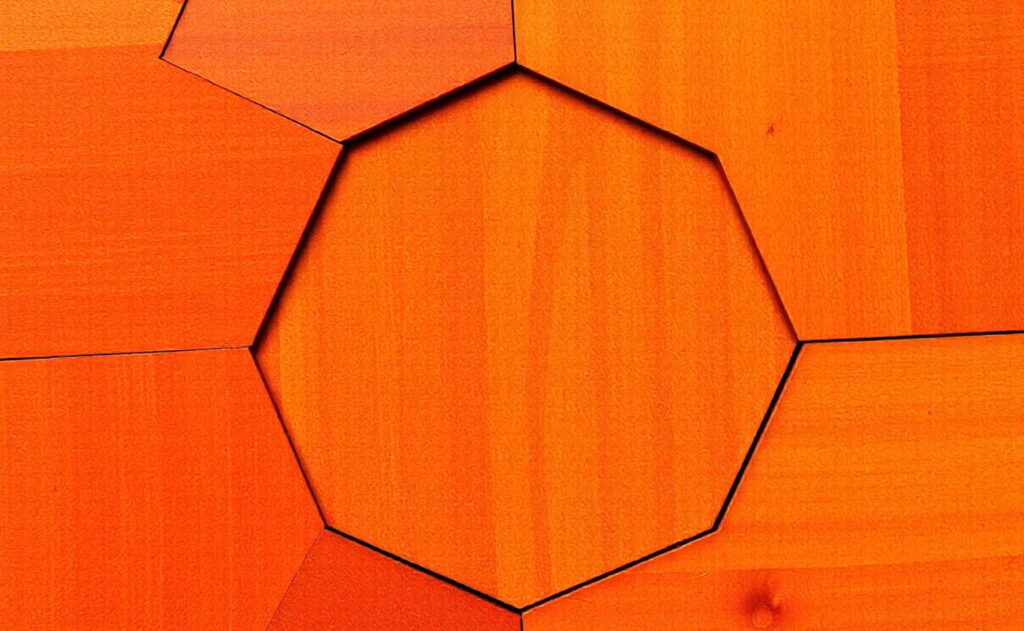The shape= pentagon is one of the most recognizable and important shapes in both geometry and daily life. Known for its five sides and angles, the pentagon holds a special place in the world of polygons. Whether you’re a student learning about geometry for the first time or just curious about shapes, understanding the Shape:bs6pi2ygs9a= Pentagon can provide valuable insights. This article will take you through its geometric properties, real-world applications, and more.
The pentagon is more than just a shape you might find in math textbooks. It appears in architecture, design, and even nature. From the famous Pentagon building in the United States to the elegant symmetry found in flowers, pentagons are everywhere. Let’s dive into the fascinating world of the Shape:bs6pi2ygs9a= Pentagon and discover what makes this five-sided figure so unique.
Table of Contents
What is the Shape= Pentagon?
At its core, the shape= pentagon is a polygon, which means it’s a two-dimensional figure with straight sides. In this case, the pentagon has exactly five sides and five angles. The interior angles of a regular pentagon (where all sides and angles are equal) add up to 540 degrees. Each interior angle in a regular pentagon measures 108 degrees, making the Shape:bs6pi2ygs9a= Pentagon both balanced and symmetrical.
The word “pentagon” comes from Greek roots, with “penta” meaning five and “gon” meaning angle. This shape can be regular or irregular. A regular pentagon has equal side lengths and angles, while an irregular pentagon has sides and angles that vary. Despite these differences, all pentagons share the same fundamental characteristics: five straight edges and five corners or vertices.
Properties of the Shape:bs6pi2ygs9a= Pentagon
When discussing the Shape:bs6pi2ygs9a= Pentagon, it’s important to look at both regular and irregular forms. Regular pentagons have some notable properties:
- Equal Sides and Angles: In a regular pentagon, all five sides are equal in length, and each interior angle is exactly 108 degrees.
- Rotational Symmetry: A regular pentagon has rotational symmetry of order five, meaning it can be rotated by 72 degrees (360 degrees divided by 5) and still look the same.
- Diagonals: A regular pentagon has five diagonals. Interestingly, these diagonals form another pentagon inside, creating a repeating pattern.
Irregular pentagons, on the other hand, may not have equal sides or angles, but they still maintain five sides and five vertices. Understanding the differences between regular and irregular pentagons can provide deeper insights into how shapes work.
Real-World Applications of the Shape:bs6pi2ygs9a= Pentagon
The Shape:bs6pi2ygs9a= Pentagon isn’t just an abstract concept confined to geometry. It appears frequently in both nature and human-made structures. One of the most famous examples is the Pentagon building in Washington, D.C., which is designed in the shape of a regular pentagon. This iconic structure has become synonymous with military power, and its unique design helps improve space utilization.
In nature, pentagonal symmetry can be seen in flowers, particularly in species like morning glories or star-shaped blooms. The pentagon’s natural occurrence in biology, especially in the arrangement of certain flowers, shows the beauty and efficiency of this shape. Additionally, some starfish species display a pentagonal shape, illustrating how nature uses geometry in fascinating ways.

Furthermore, the shape= pentagon plays a role in art and design. Artists and architects use the pentagon to create pleasing, symmetrical patterns in their work. Its aesthetic appeal lies in its balance between complexity and simplicity—more complex than a triangle but less so than a hexagon or octagon.
The Pentagon Building: A Symbol of the Shape= Pentagon
One of the most famous applications of the Shape:bs6pi2ygs9a= Pentagon in architecture is the Pentagon building in the United States. This structure, home to the U.S. Department of Defense, is not only massive but also highly efficient. Its pentagonal shape allows for a large amount of office space, organized in a way that minimizes walking distances between different sections. The building’s geometry is as functional as it is symbolic.
The Shape= Pentagon in Nature
In nature, the Shape:bs6pi2ygs9a= Pentagon appears in various forms, including the five-point symmetry of some flowers and marine life. For example, starfish often display a pentagonal form, with five arms radiating from a central point. This natural occurrence of the pentagon illustrates how geometry is fundamental to the structure of living organisms. The pentagon’s presence in nature isn’t just coincidental—it helps certain organisms maintain stability and balance.
Mathematical Significance of the Shape:bs6pi2ygs9a= Pentagon
The Shape:bs6pi2ygs9a= Pentagon holds significant importance in the world of mathematics, especially in geometry. Understanding its properties provides insight into larger concepts like angles, symmetry, and polygons. For students learning about polygons, the pentagon often serves as a stepping stone to more complex shapes like hexagons and octagons.
Symmetry and the Shape= Pentagon
Symmetry is a key feature of the Shape:bs6pi2ygs9a= Pentagon. A regular pentagon has five lines of symmetry, meaning you can fold it along these lines, and each half will perfectly match the other. Symmetry is crucial in both geometry and design, as it creates balance and visual harmony. The rotational symmetry of a pentagon, as mentioned earlier, allows it to be rotated by 72 degrees and still appear the same. This symmetry makes the pentagon an attractive shape for both mathematical study and practical use.
The Golden Ratio and the Shape:bs6pi2ygs9a= Pentagon
Another interesting aspect of the Shape:bs6pi2ygs9a= Pentagon is its connection to the golden ratio, a mathematical concept often associated with beauty and harmony. In a regular pentagon, the ratio of the length of a diagonal to the length of a side is the golden ratio. This unique relationship has fascinated mathematicians and artists for centuries. The golden ratio appears frequently in nature and art, making the pentagon not just a geometric shape but also a symbol of aesthetic perfection.
Conclusion
The shape= pentagon is a fascinating and versatile shape with applications ranging from geometry to architecture, nature, and art. Its unique properties, such as its symmetry, rotational ability, and connection to the golden ratio, make it a significant figure in both the natural and constructed worlds. Whether you are studying its mathematical aspects or appreciating its aesthetic qualities, the pentagon offers a wealth of knowledge and beauty.
Understanding the Shape:bs6pi2ygs9a= Pentagon is not only essential for students learning geometry but also for anyone interested in the broader applications of shapes. From the Pentagon building to starfish, this five-sided figure plays a crucial role in our world. Keep exploring shapes like the pentagon, and you’ll discover just how much geometry influences the world around you!
